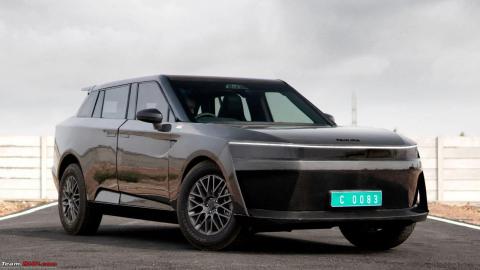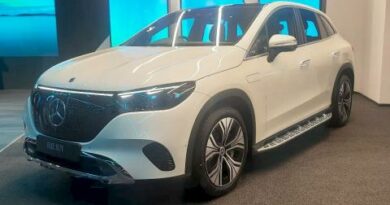Why we don’t have more Indian car companies mushrooming like China?
Pravaig and a few others keep popping up in the news from time to time, but none of them seem to gaining much traction.
BHPian HartBandit recently shared this with other enthusiasts.
As a developing economy with a good appetite for cars, why aren’t more companies throwing their hats in the ring and making cars?
OLA seems to be the only serious player with intentions to become a serious car maker (even though we haven’t seen any prototypes yet). Others like Pravaig and a few others keep popping up in the news from time to time with their prototypes but none of them seem to gaining much traction.
Companies like Reliance, Adani, ITC, Godrej and even Ashok Leyland have the capital required and we seem to have the support of Government policies to start up. There is so much more action in the two-wheeler space (kudos to Ather, UV Ola, and many others). Even established two-wheeler companies like Bajaj, Hero and TVS have no big plans to make four-wheelers – this is a good moment to start because EVs are a gateway to start from scratch.
Suzuki and Hyundai-Kia are still taking the lion’s share of the market and thankfully Tata Motors has been at the forefront of making some pretty good EVs to finally have a semblance of an answer.
But such a huge, promising, developing nation – and only two (proper) carmakers – what gives?
Here’s what BHPian Ferruccio had to say on the matter:
A few years ago one of the rank outsiders who was interested in making EVs called me for a cup of tea which could or could not culminate in me becoming their Head of Product and Marketing. After hearing them lay out their plans I thanked them for the tea and as I was leaving I said “It is easy to become a Millionaire in this business. But you have to begin as a Billionaire.” And that sums up your answer.
Indians are too good at calculating ROI. Having competed against the Chinese for the last 2 decades and having seen their silly investments in a host of God-forsaken countries worldwide where work takes me, I am convinced that the Chinese are not very good at arriving at ROI.
Chinese successes have been arrived at with brute effort, the business equivalent of the “human wave” attacks that overrun the brave Indian positions in NEFA in 1962. We credit them with having a well-thought, grand design in their machinations. Yet, all evidence points to their efforts being like 7 ants moving a grain of sand – 4 pulling in the right direction and the other 3 in random directions. Throw enough ants at the problem and they end up moving Mt. Everest. However, even the most illiterate Indian would question why you need to move Mt. Everest in the first place!
Were it so simple to make good EVs why would brands that have immense R&D budgets and have been building ICE cars for over a century, struggle with the endeavour? It is not as simple as it seems and that is why companies struggle.
The final costs of having 30 odd 4W EV makers and 300 odd 2W EV makers in China are yet to be tallied. The Indian auto industry is in a good place and I am sure as the technology gets more robust we will find Rapid Followers emerging. And it is better to have a handful of strong EV makers than a smorgasbord of garage shops.
P.S.: The company that offered me tea still have dreams but hasn’t rolled out anything that runs on its own power yet.
Here’s what BHPian Livnletcarsliv had to say on the matter:
The simple and short answer to your question is “China is way ahead and better than India in terms of the automotive market as well as industry”.
To elaborate further the following are the points not limited to,
- The Chinese automotive market is almost or more than 5 times that of the Indian market, in terms of volume.
- The quality of Chinese products is way ahead compared to Indian products. Remember still in India, >60% of the 4-wheeler market is dominated by Maruti. And we all know the quality and price of Maruti products.
- The market expectations, product strategies, R&D budgets, product positioning, and customer purchasing power of China are way ahead and higher than India. Just compare the volume of 3 Germans sold in China (Merc, BMW, Audi) and India last year where China is 100 times more than India.
- Let us also not forget the start-up ecosystem in China which started in the ’80s and ’90s whereas in India it’s only a few years old.
- The supportive government policies, infrastructure, willing workers, etc are more abundant in China than in India. Most of the policies are instigating, inducing and enabling in China whereas in India such things are limited. Can you name one city/place in India that has the infra, road network, and planning of a comparable Chinese place/city?
- The monetary benefits, and of course the returns are also high in China given China is also a leader in innovation and technology.
- Also, China is still the manufacturing hub of the world. India with its current policies, road map and attitude can never reach there. How many Indian smartphone brands do we have that are globally recognised? How many Indian TV/home appliance brands do we have that are globally recognised? In our every day, how many things do we use that don’t have a single part from China?
- Automotive industry is no exception. India is still a poor country compared to China.
- India is a consumer market and doesn’t produce. India relies on services. India is not self-reliant in most of the things. But China is a product market, self-reliant in many if not all, while also consuming. This is a big difference in why China is way ahead of India in terms of economic status.
So we have a long way to go ONLY with the right, appropriate and imperative policies, road-map, strategies and execution to even have 2-3 more brands/names, let alone catch up with China.
Here’s what BHPian extreme_torque had to say on the matter:
Excellent answer but you forgot another incredibly important thing, quality education. China has some of the best universities in the world today and culturally just like India they place high importance on getting a good education. All of it shows in the growth of their local industry as well as the competitiveness of their companies abroad including the number of patents filed at which they are currently number 1. USA is the next best and they file less than half as many patents as China. Their spending on education as a percentage of GDP is 4.01 per cent compared to 2.9 for India. Also, remember that their GDP is approx 6 times larger than that of India and the fact that of the total government spend only a fraction reaches the public in India and the gap widens to chasm.
Here’s what BHPian antonylejos had to say on the matter:
Back to 2004:
I was in the market to buy a mobile, in fact, my first mobile. My friends were all advising me to buy a NOKIA.
According to them, NOKIA had the following advantages:
- Resale Value
- Service
- Signal reception, even when the tower was far away, and many more.
Anyway I went and bought an LG G1500, which nobody had then
Fast forward to 2023, and nobody is concerned about any of the above parameters when buying a mobile.
Now the cost of a mobile is something we can simply buy, use, and replace with a new mobile after 3 years, even if we get zero resale value.
People just replace their mobiles when they stop working, rather than searching for a service centre.
However, cars are not yet like that for Indians, considering our income and the cost of cars.
That’s why now when we are in the market to buy a car, all our friends give us risk-free (for them) advice to us. Buy a Maruti. The reasons remain the same.
- Resale Value
- Service
- Mileage (Signal reception, got replaced by mileage here)
anyway I ignored them this time too, and went with Citreon C3, which nobody has
When our income grows a bit more (I am not going to state a specific number here), we will be able to treat cars the way we treat mobiles now. Maybe at a point in time when most Indians can buy a car with just 1-3 months of their gross salary, we will see a mushrooming of car companies in India.
By that time, people will stop seeing (normal commuting cars) as status symbols and a utility, which serves them the purpose of travelling from point A to point B.
Here’s what BHPian Desi Dybuk had to say on the matter:
What a wonderful topic to discuss @HartBandit! Kudos for initiating a discussion on a wonderful subject.
It is not that we don’t have our own world-class car companies; Tata & Mahindra are both proud products of our country. And both have products that can compete respectably in an international market; both in technology & safety (the latter of which Chinese car companies have a bad reputation in).
I think it can be traced back to HOW the international automobile companies came to India after liberalisation & can be better understood by looking at the 2-wheeler companies. Before liberalisation, in the 80s, the government decided to allow foreign 2-wheeler companies to set up assembly plants in India but with the condition that they need to partner with an Indian company. So, we had TVS partner with Suzuki (TVS-Suzuki), Yamaha with Escorts (owner of Royal Enfield now), Bajaj with Kawasaki (Bajaj-Kawasaki), and Hero with Honda (Hero Honda).
Indian 2-wheeler companies learnt technical know-how, best manufacturing processes, quality control & developed knowledge base and trained manpower through 2-3 decades of partnering with these international companies. Thus, companies like TVS, Bajaj & Hero gained enough knowledge & confidence to stand on their own feet when inevitably they separated from the big MNCs. Today, these Indian companies can stand shoulder-to-shoulder with any International company. This institutional knowledge & confidence is what enabled companies like Ather & Ola to strike out on their own as they had a ready pool of engineering talent, manufacturing workers, logistics & parts vendors.
This didn’t happen with the 4-wheeler segment. Till the mid-90s, other than Maruti, there was no other international car brand. And because of liberalisation, international car companies didn’t need to partner with any Indian company. (Although, Mahindra dabbled with Ford, DCM with Honda, and Kirloskars with Toyota). This is unlike in China where even now, foreign companies need to partner with a Chinese company (except Tesla which got a rare exemption).
But things will change in the next decade. Car manufacturing, being a very capital-intensive operation, needs deep-pocketed investors to support a startup. Our economy is growing rapidly & with the whole shifting to EV movement, it is only a matter of time before Indian startups emerge in the car segment & which are backed by deep-pocketed Indian Venture Capital. My primary bet is that if Ola’s secret car project produces even a half-decent car, it’ll open the floodgates for other startups like Ather & Bounce.
The electric 2-wheeler startups of today are honing their skills in technology, QC & service and it’s only a hop-skip-jump to the next phase of car & bus manufacturing. Within a short span of 4-5 years, India has become a leader in 2-wheeler EV space & can compete well with the mighty Chinese.
India’s economy is growing, India’s workforce is still young & tech-savvy & we have a couple of decades of strong economic growth ahead.
Check out BHPian comments for more insights and information.
Source: Read Full Article


